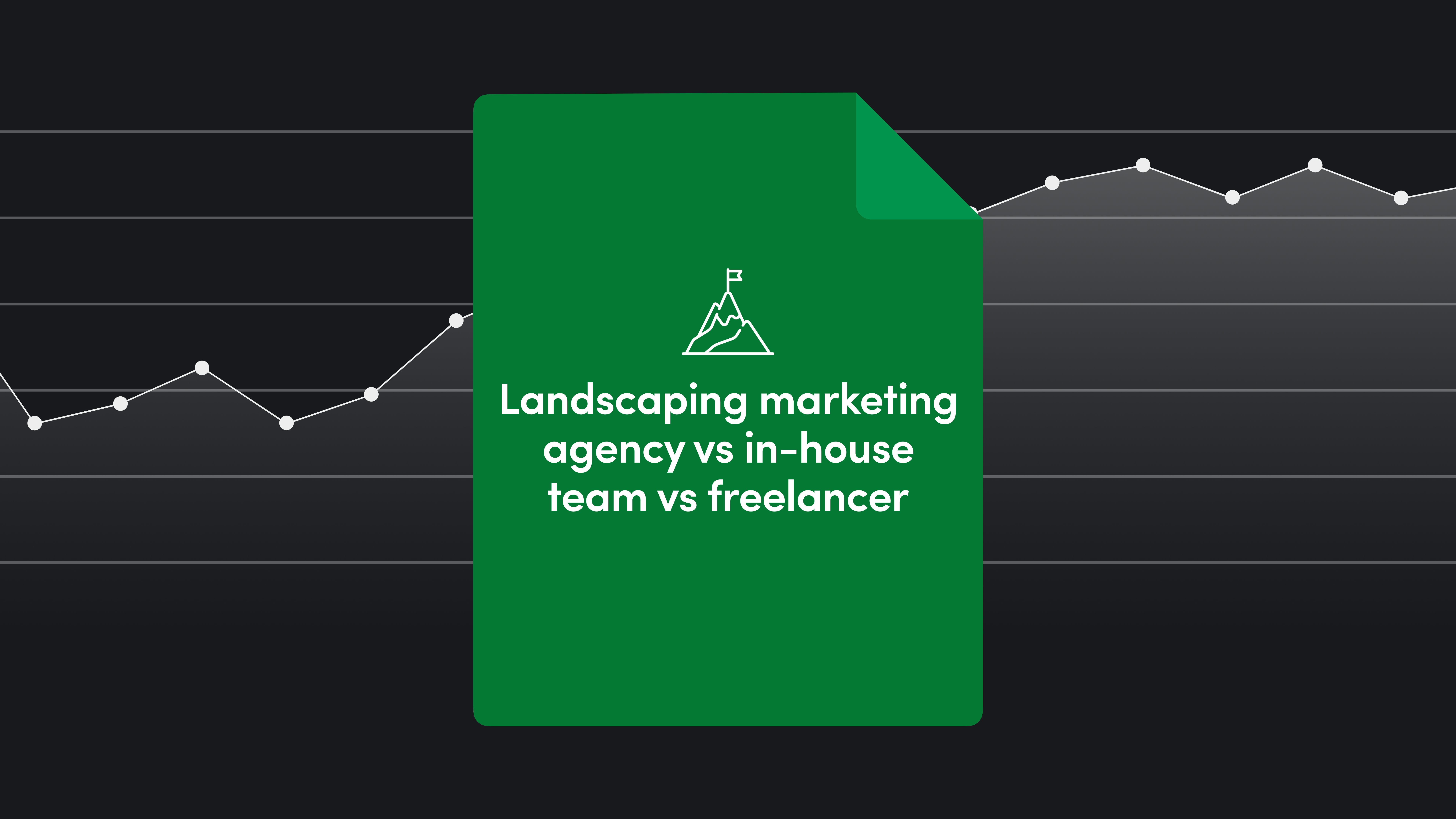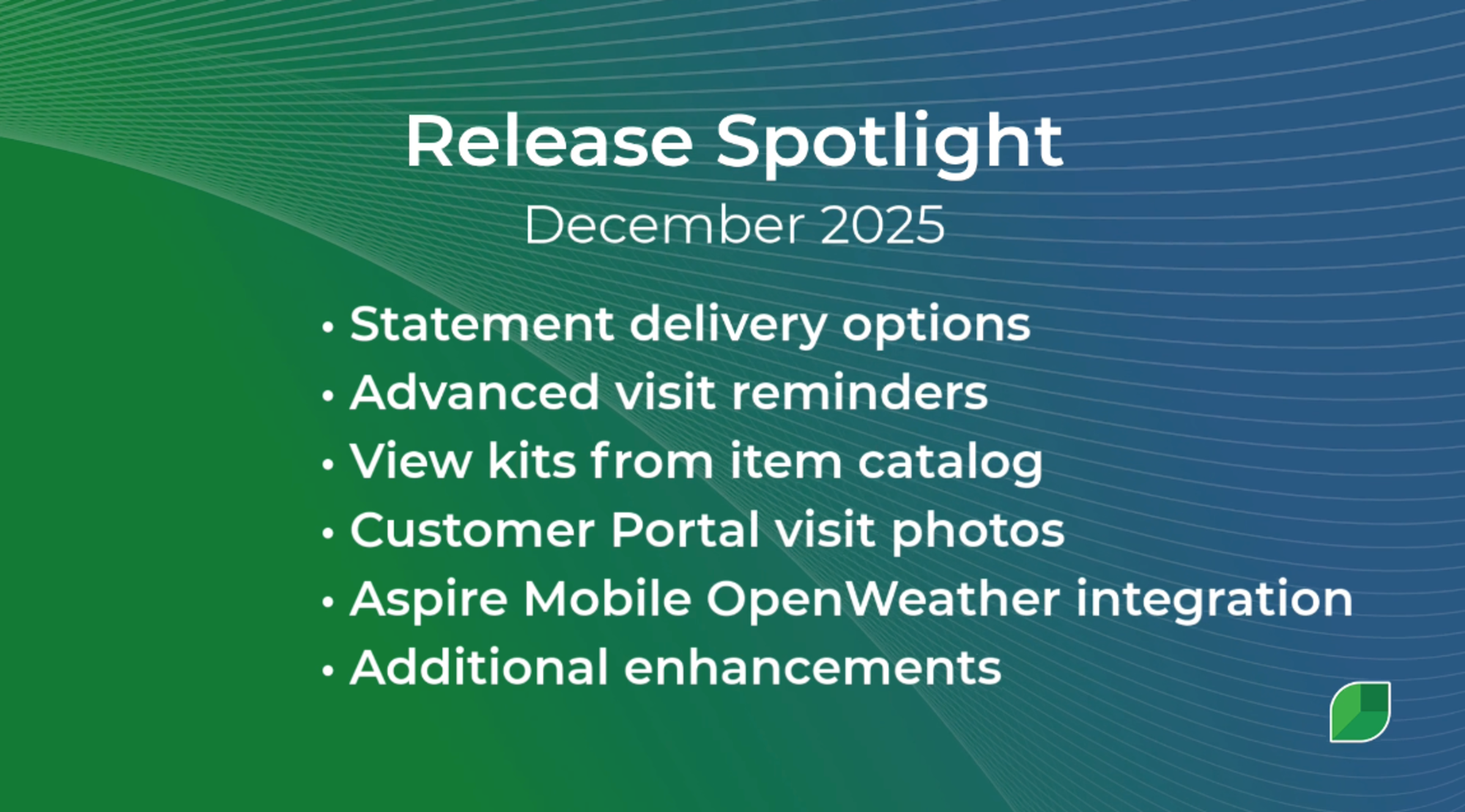Any role at a high-growth company comes with challenges. The landscaping industry requires employees to adapt, respond quickly, and manage numerous responsibilities. When those responsibilities involve inefficient workflows, stress on the employees and the company increases.
If your landscaping company isn’t operating as efficiently as possible, it might be time to implement a business management solution that streamlines how you work, driving new profitability while aligning with your company's goals.
A management solution is a company-wide investment rather than a solution you can implement independently. Here are some best practices for working with leadership to get buy-in for a landscape management software solution.
Understanding senior leaders and their challenges
Senior leaders play a crucial role in driving organizational success but face unique challenges that can impact their effectiveness in the day-to-day, such as balancing short-term goals with a long-term strategic vision.
It’s not easy.
Management must navigate the complexities of leading a large organization, managing multiple stakeholders, and making strategic decisions that drive profitability and growth.
Landscape management software is one solution to change the company's strategic direction.
Introducing new technologies to streamline workflows impacts the company's bottom line through increased revenue. It can also give leaders a return on their investment by supporting their strategic goals and driving greater employee engagement.
Let’s discuss how you can implement leadership buy-in for landscape management software.
Find a champion
The first step for any significant change is to ensure you have support in your efforts.
You don’t want to spend your time on a search that won’t have backing.
Getting the green light before you begin finding the right solution will ensure you stay on the right track and have a focused game plan. To do that, you’ll need to find someone to champion your efforts and help you build a solid business case for the software you wish to implement.
Outlining the desired outcomes of implementing the software, such as improved efficiency, better data management, and increased profitability, is crucial to demonstrate its value.
A champion should be someone who:
Understands the challenges and needs of your role
Knows the values and mindsets of leadership
Has some authority with the decision-makers of your company
Can bridge the gap between leadership and crew members
Be seen as someone who can offer leadership support
Also, it should be someone you trust and have a good rapport with.
Build a business case
The best way to give your project proper momentum is to build a business case for your potential software solution. A business case is a carefully constructed document detailing a roadmap containing the benefits behind the investment to convince a decision-maker to approve the recommended solution.
A business case aims to illustrate the value of an investment to a business and reduce concern over any risks or potential challenges. It assists with garnering buy-in from leadership, translating your needs into value they understand, and tying your desired solution to major company strategies.
Your business case needs to cover these core aspects of the investment:
Value to the business:
Cover efficiency improvements, time-saving benefits, cost savings, new business capabilities, and visibility into operations. These value points should be tied to the business’s fundamental goals and growing pains. Ultimately, senior leadership wants to see a return on investment.
Value to business roles:
Displaying the weight behind your urgency about a new solution is vital to the success of your business case. As a valued team member in your position, you have a unique viewpoint that leadership doesn’t get to experience daily. Illustrate the struggles of your role, the benefits to the business if you could do more with your position, and how a potential software could amplify the capabilities of your part and everyone with similar responsibilities. The software can benefit each business unit by improving specific processes and outcomes, driving organizational-level results.
Scalability:
An investment of this stature must benefit a company’s ability to achieve a new growth stage. Scalability is vital to long-term success; the more your solution can help in the long term, the more decision-makers will be willing to buy in. Consider reviewing automation, features, analytics, and items that enhance a company’s ability to standardize performance.
Company culture benefits:
Every business cares about keeping its teams connected and the organization collaborative—initiatives such as landscape management software aid in redesigning the entire company culture, from top to bottom. Review key investment areas that improve the company’s connectivity, communication, and cohesion.
Understanding leadership’s goals
To guide your business case, gather information that will stand out to your local decision-making team. To do that, you need a clear understanding of the short- and long-term goals of the business. Each leader has individual goals they strategize around to help the company achieve its grander vision, so you need to explore each department’s current wants and pains.
Understanding senior executives' goals is crucial, as they face unique challenges and require continuous development to meet organizational targets. The software can help senior executives achieve these goals by enhancing their self-awareness, communication, and ability to influence others effectively.
Decision-makers will likely ask you:
How will the software boost productivity and lower costs?
How will enhanced efficiency and job tracking improve customer retention and satisfaction?
How will the business expand by scaling and acquiring more clients?
You should identify the key stakeholders in charge of the strategies for navigating these goals.
If you cannot access time with leadership, consider finding co-workers within the department who are clear on the current goals and daily operations.
Compare solutions
You want to come to your leadership team with software options and extensive research on all of them.
Plenty of single-point solutions exist, and getting lost in the crowd can be easy. The ideal software platform for buy-in must achieve specific goals and benefits. Focus on these core aspects of your ideal software and explore solutions with excellent reviews in those capabilities. Additionally, consider feedback from experienced managers who deeply understand the company's needs and challenges.
Then, be specific with how you present your options.
Be thorough, but keep the information straightforward so leadership doesn’t get overwhelmed.
Use sites like Software Advice, Capterra, SourceForge, and GetApp to compare different software. These comparison sights will even break down key features and help you quickly distill what a solution is or isn’t capable of.
You can pull from reviews and testimonials, preferably ones that speak directly to the functionality or goals you’re seeking to achieve.
Compile customer stories or case studies that align with your business’s pains and goals.
Once you have the range of solutions you’d like to present, organize the data and info before you submit and begin to pick your top runners.
How to choose the best landscape management software
Selecting the right landscape management software is essential to optimizing your operations and fostering growth. With numerous options available with different pricing plans, assessing which solution best suits your company's needs is crucial.
Here are the key factors to consider when choosing software for your landscaping business.
Functionality: Look for software with vital tools like automated scheduling, invoicing, GPS tracking, and custom reporting. These features will streamline operations and provide better control over daily tasks.
Scalability: As your landscaping business expands, the software should scale with you. Opt for a solution that can handle increased workloads, additional users, and expanded services such as lawn care or garden design.
Ease of use: The software should have an intuitive interface, making it easy for your team to learn and use daily. Features like drag-and-drop scheduling and real-time reporting can simplify operations and improve productivity.
Integration: To avoid workflow disruptions, ensure the software integrates seamlessly with your current tools and platforms, such as payroll, invoicing, marketing, or customer relationship management (CRM) systems.
Support and training: Choose a provider that offers thorough training and continuous customer support to ensure a smooth implementation and long-term success for your landscaping business.
By evaluating these factors, you’ll be well-prepared to select the right software to meet your landscape management needs and support long-term growth.
Report your findings
Once senior management has agreed to adopt the software, you must report your findings.
Effectively communicating your findings is critical to gaining leadership buy-in. Your metrics need to be concise, precise, and human. Your efforts might derail if your information is scattered, doesn’t flow well, or is just a robotic influx of information.
Work with your champion to organize your regular updates.
Ask them for opinions on your notes, if they consider specific insights valid or unnecessary, and get suggestions on what might be missing.
Compare your presentation to other company presentations. Check if the sales team has any decks or templates they use to keep your formatting and style clean while reflecting company values.
Pinpoint a cadence and flow to your information.
Highlight pain points, then develop solutions to those challenges. Expand on how those solutions benefit the company and build up to the company's bigger goals.
For example:
Time saved: Measure the time saved by automating tasks and improving scheduling, invoicing, and client communication efficiency.
Customer satisfaction: Track customer satisfaction ratings and feedback to assess the software's impact on the client experience. Look for enhancements in communication, service quality, and overall satisfaction.
Revenue growth: Monitor revenue increases, new clients, and services growth to evaluate how the software drives business expansion.
Cost savings: Quantify reductions in expenses, such as paper, printing, and manual labor, as automation significantly cuts these costs.
Return on investment: Calculate the software's ROI by comparing its costs and benefits, including the initial investment, ongoing subscription fees, and financial gains from improved efficiency and revenue growth.
Get the conversation started
Ensure you’re not wasting time and effort on a fruitless search by starting a conversation with leadership.
Use this guide to explain how landscaping business management software can revolutionize companies by addressing common challenges like inefficiency, communication issues, and lack of oversight. By creating a solid business case, you can demonstrate to business owners how the software will streamline operations, cut costs, and boost customer satisfaction.
Put out a feeler, check if they’ve explored similar options, and what stopped them in the past. Make sure they’re open to the vision before you spend time vetting solutions.
Gaining leadership buy-in is an ongoing process that requires continuous effort and communication.
As a management software with a decade of experience in this industry, Aspire understands the challenges of starting the conversation.
So, let us be your first champion with related resources available to help you get started on your search, such as:
After you’ve showcased how a business management solution will transform your business, take the next step with a personalized demo.









